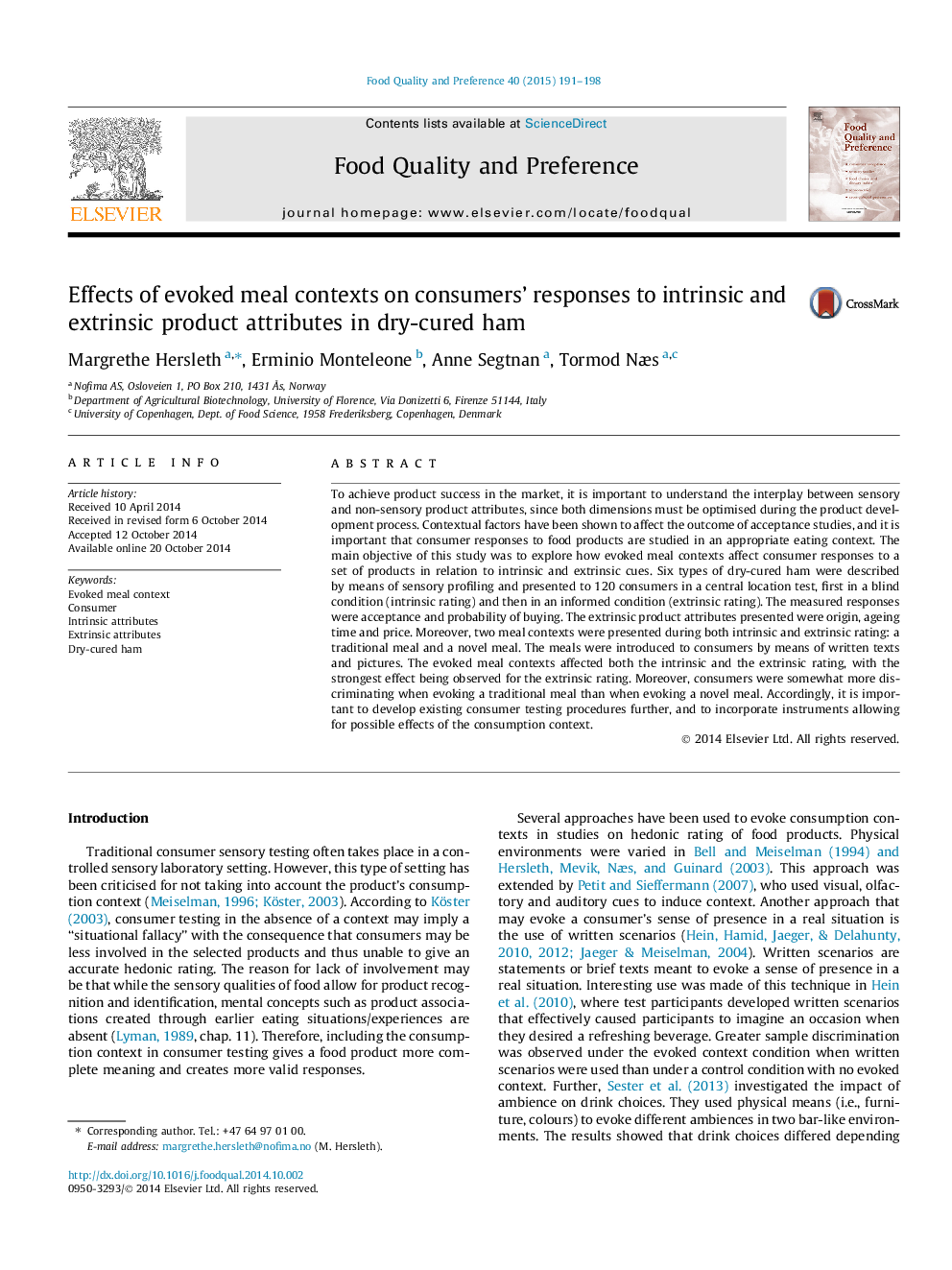| Article ID | Journal | Published Year | Pages | File Type |
|---|---|---|---|---|
| 4317078 | Food Quality and Preference | 2015 | 8 Pages |
•Effects of evoked meal context was found on intrinsic and extrinsic ratings.•Effect of evoked meal context was most evident for the extrinsic ratings.•The largest sample discrimination was found for the traditional meal.
To achieve product success in the market, it is important to understand the interplay between sensory and non-sensory product attributes, since both dimensions must be optimised during the product development process. Contextual factors have been shown to affect the outcome of acceptance studies, and it is important that consumer responses to food products are studied in an appropriate eating context. The main objective of this study was to explore how evoked meal contexts affect consumer responses to a set of products in relation to intrinsic and extrinsic cues. Six types of dry-cured ham were described by means of sensory profiling and presented to 120 consumers in a central location test, first in a blind condition (intrinsic rating) and then in an informed condition (extrinsic rating). The measured responses were acceptance and probability of buying. The extrinsic product attributes presented were origin, ageing time and price. Moreover, two meal contexts were presented during both intrinsic and extrinsic rating: a traditional meal and a novel meal. The meals were introduced to consumers by means of written texts and pictures. The evoked meal contexts affected both the intrinsic and the extrinsic rating, with the strongest effect being observed for the extrinsic rating. Moreover, consumers were somewhat more discriminating when evoking a traditional meal than when evoking a novel meal. Accordingly, it is important to develop existing consumer testing procedures further, and to incorporate instruments allowing for possible effects of the consumption context.
